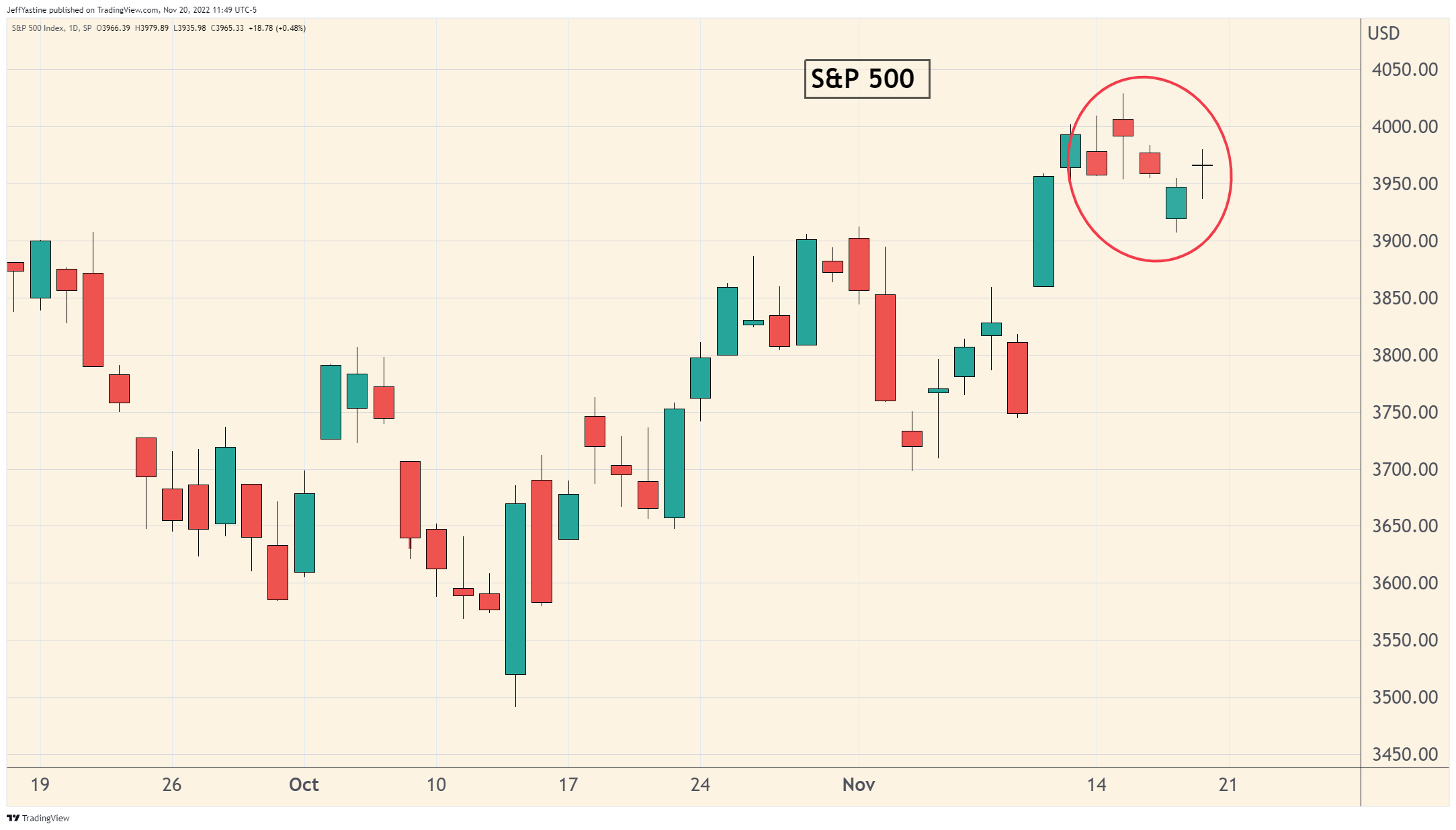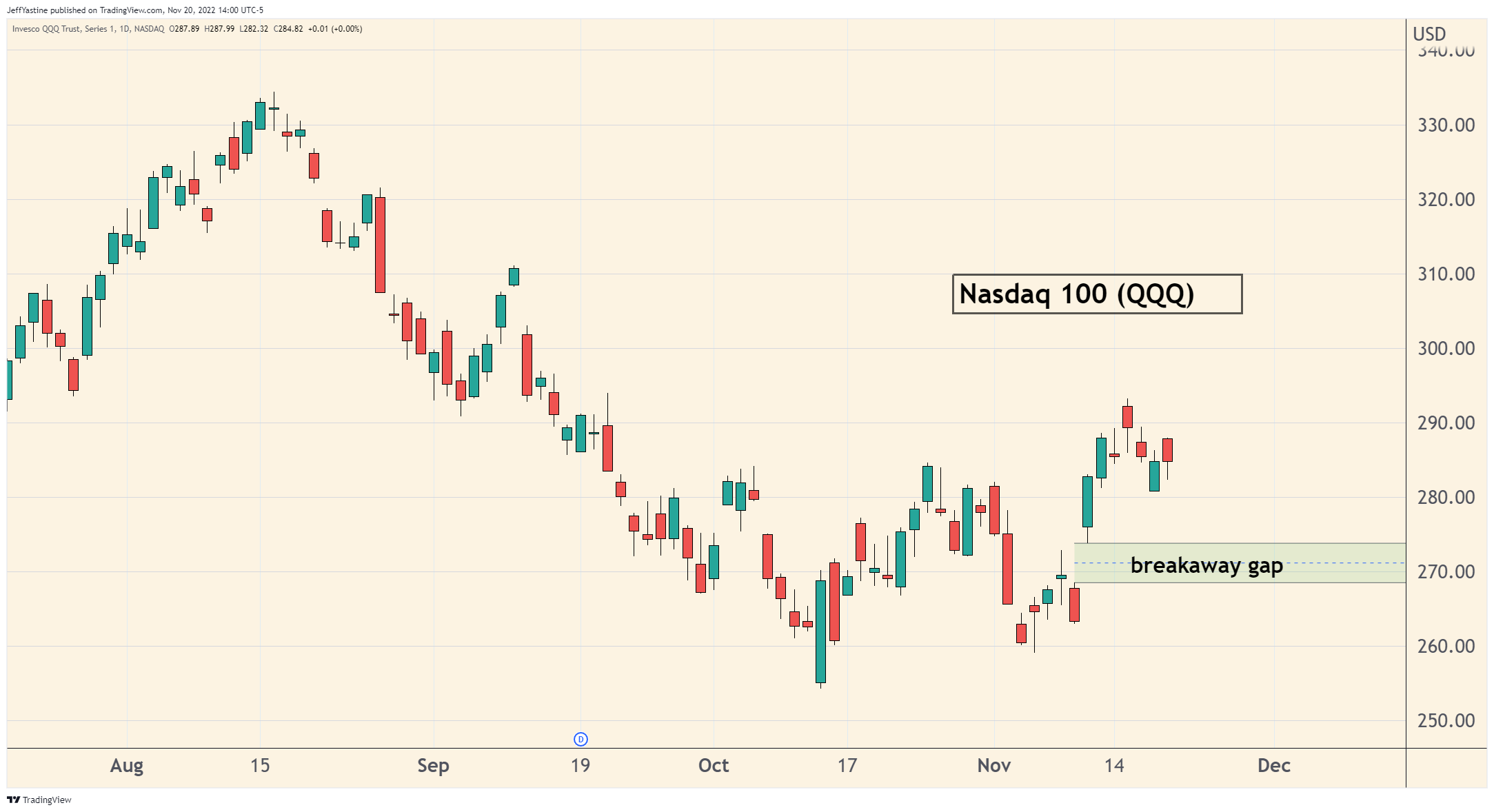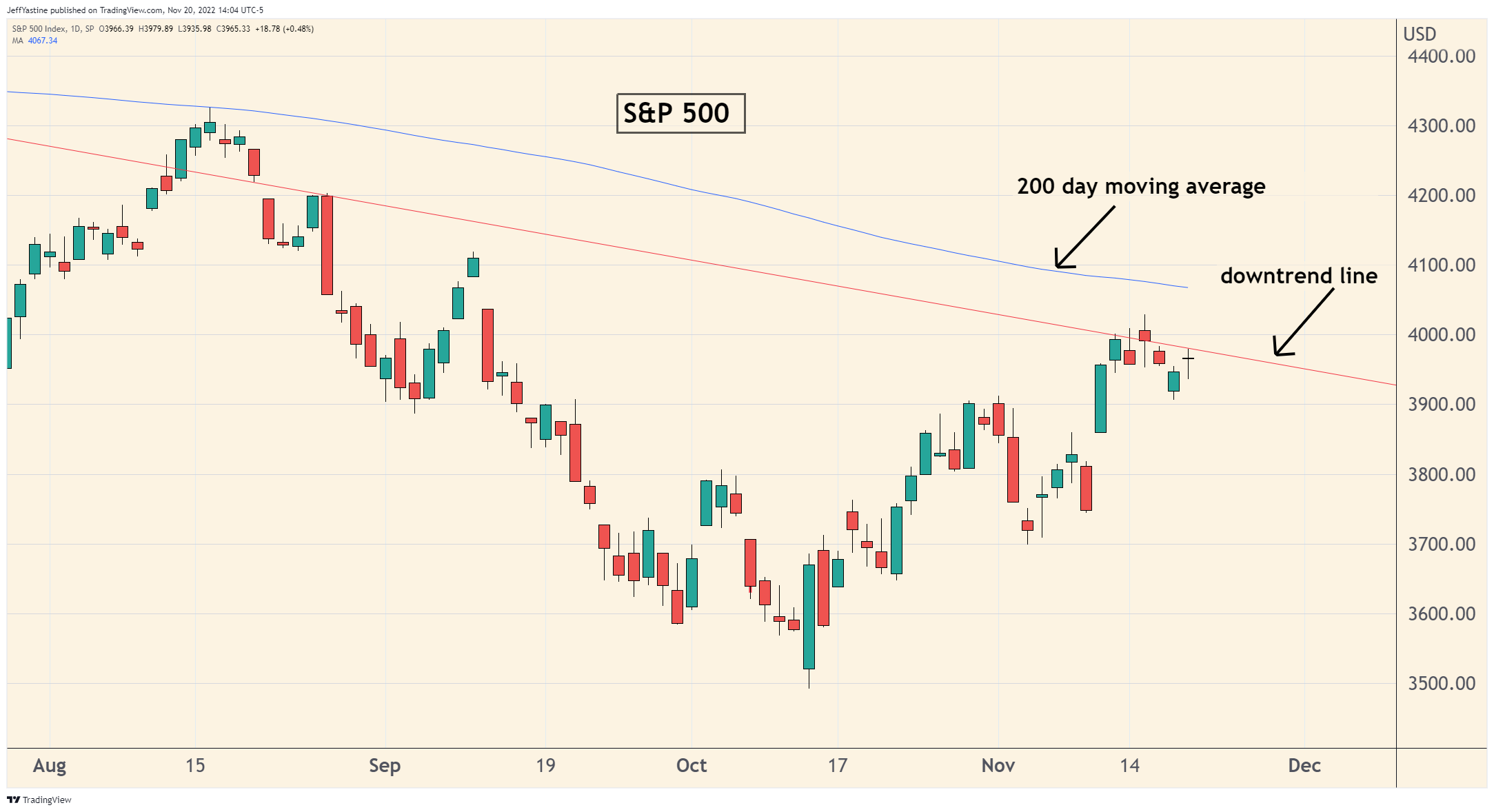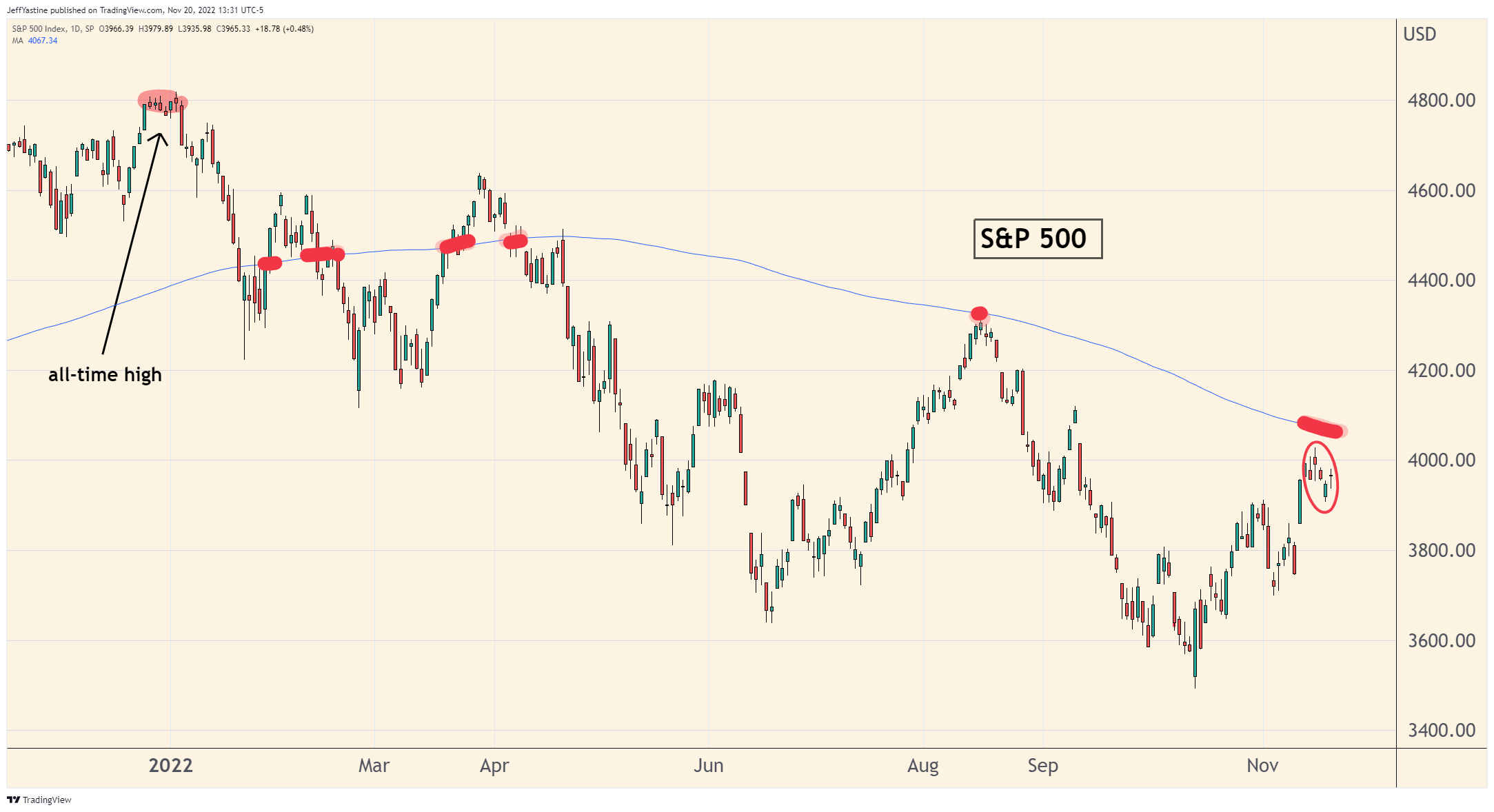Why Bear Market Opportunities Go to Waste

I tried very hard not to look at my stock portfolio last week...
It wasn't because I had major losses - most of the stocks I own or have recommended recently are "in the green" these days.
But after 11 months of a bear market, the feeling is strong to SELL.
That's especially the case when there's a lull in the market - like last week - when the market went sideways for 5 days in a narrow range:

Here's what the voice inside my head was saying all last week:
"Sure Jeff, you're up 10% on this-stock or that-stock after just a few weeks. Sell now," that inner voice says, "before your 'small winner' becomes a loser in your portfolio - when the market inevitably takes another tumble."
It's the voice of self-preservation. For the last 11 months, that's been the right move most of the time.
But that's also why 99% of most investors are never in a position to benefit from those periods where the market might bend - but not break - under the weight of investors' bearish expectations.
In terms of odds - i.e. probabilities - I'm betting on further gains ahead, at least through the middle of December, until the market proves me wrong. Here are 4 reasons why:
- We're in a seasonally-positive time of the year. That's not always the case in a bear market, as I've warned previously. But to me, the October CPI report - and the stock market's dramatically bullish reaction to it - may have changed all that.
- Unfilled 'breakaway gap'. The rally that started a few weeks ago created what technical charting folks call a breakaway gap (in green on the chart below).

Here's the thing about 'breakaway gaps....the longer a gap goes "unfilled" - meaning the market does not quickly decline back to that level - the more likely that the market (or individual stock) will run longer and/or higher than most investors expect.
3. Pause at the 'downtrend' line. It's interesting that the major indexes all took a pause last Tuesday, and finished the week more or less unchanged.

The "pause" level matches perfectly to a downtrend line that extends all the way back to the start of the bear market at the beginning of the year. I'd like to think that lots of stocks are lingering just below this level, building strength in order to yet-higher levels in coming weeks.
4. "Gravitational pull" of the 200-day moving average.
The 200-day moving average (the blue line on the chart above) exerts a sort of 'gravitational' effect of the major indexes.
Everyone needs a marker, a "line in the sand," to judge whether they're on the right side (or wrong side) or a rally; for most pro traders and investors (who care about technical analysis) the 200 d.m.a. serves as that marker.
So I think there's a good case for the major average all moving higher to challenge the 200 d.m.a. again, much as they did at points throughout the earlier parts of the year:

Let's presume I'm right...and the major indexes really do penetrate the 200 d.m.a. in coming weeks. Does that mean we're out of the woods yet with the bear market - or will this rally still eventually fail, like all the others this year?
That part of the story is still un-written.
The key thing to remember with all this is that "bottoms" for stock indexes - and for individual stocks - are not the same thing.
In other words, the stocks of the better companies - those with resilient business models, high value, high growth (or some combination of the above) - tend to "bottom" first, even while the stock market indexes struggle and make eventual new lows.
In my next post this Wednesday, I'll share more details from past bear markets of exactly those kinds of stocks.
Jeff Yastine
Member discussion